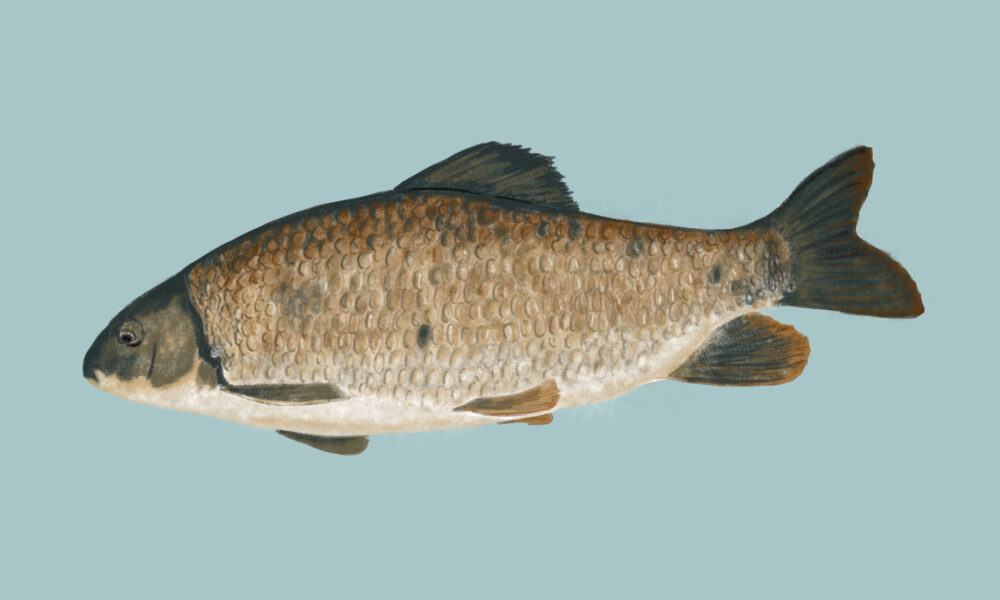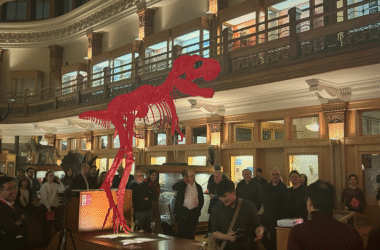Copper redhorses, a kind of freshwater fish, are the only vertebrates found exclusively in Quebec. However, their population is declining. Recent evidence suggests that the ‘recruitment’—a measure similar to birth rate—has dropped in the past few years.
Hugo Marchand, a postdoctoral researcher in Jessica Head’s ecotoxicology laboratory at McGill’s Department of Natural Resource Sciences, recently collaborated on a paper examining the threats facing young copper redhorses.
Copper redhorses have only two spawning sites, and both are in the Richelieu River. Since most of the watershed is occupied by agricultural land, the researchers hypothesized that pesticide runoff contributes to the mortality of young fish.
“Pesticides, which are often applied during or just before the breeding season, are washed off in the river every time there is heavy rain,” Marchand said in an interview with The Tribune.
In a previous study, the researchers exposed fish embryos to two treatments: River water and laboratory water. Embryos raised in river water had a 15 per cent lower survival rate during their first two weeks of life, which is significant given that copper redhorses typically have a lifespan of up to 30 years.
In the team’s most recent study, they collected daily water samples from the two spawning sites and from two tributaries—rivers that join a larger river rather than flowing directly to the ocean—to determine whether the pesticide concentration during the breeding season could explain the low recruitment rate. The researchers used an additional long-term sampling method to assess how contaminant levels change over time.
The laboratory analyses revealed a cocktail of contaminants in the Richelieu River.
“There are obviously a lot of pesticides,” Marchand noted. “There are also a lot of pharmaceutical and personal care products because [the Richelieu River watershed] is also an inhabited area. Even though the wastewater is filtered, filtration is not the best, and the [wastewater treatment] plants in the area are known to overflow.”
Some pesticide concentrations exceeded the water quality guideline thresholds set by the Canadian Council of Ministers of the Environment. The researchers even detected chemicals that were banned around 30 years ago, showing how persistent these compounds are in the environment.
Marchand emphasized the need for ongoing water monitoring to track changes in the river’s chemical composition. New pesticides and new regulations can influence what compounds are found in the river, and so can natural changes in river flow from year to year, both factors that contribute to the river’s contamination.
Beyond assessing water quality, the team tested the toxicity of four individual pesticides on early-life-stage fish. None of them had an impact on survival.
“It does not mean that these pesticides in the [river] mixture are not causing the effect, but individually, we cannot pinpoint which one caused the effect that we observe [in the river],” Marchand said.
Moreover, contaminants may have indirect effects on copper redhorses.
“Even though we measured the effects [of pesticides] on the fish, we did not measure the effects on their food,” Marchand said. “[Their food] is all invertebrates, which are most likely going to be much more vulnerable to pesticides.”
Moving forward, Marchand aims to establish the lowest concentrations of river contaminants that induce changes in gene expression in young fish, thereby helping policymakers set more precise safety thresholds.
He also expressed concern about the expansion of the Contrecœur Port Terminal. If the Major Projects Office, established by Mark Carney to accelerate the approval of major projects in Canada, approves the construction project, it will inevitably destroy aquatic vegetation beds—the habitat of copper redhorses. Although the Species at Risk Act prohibits the destruction of an endangered species’ habitat, the Major Projects Office may still propel the project forward. The Canadian Parks and Wilderness Society has launched a petition opposing the project. To protect copper redhorses, the organization COVABAR is raising awareness in communities along the watershed. Marchand also recommends vegetating the riverbanks, restoring natural riverbanks to improve water quality, and implementing agricultural practices that reduce pesticide use. Through a combination of conservation strategies, the currently endangered copper redhorse may persist for generations to come.






